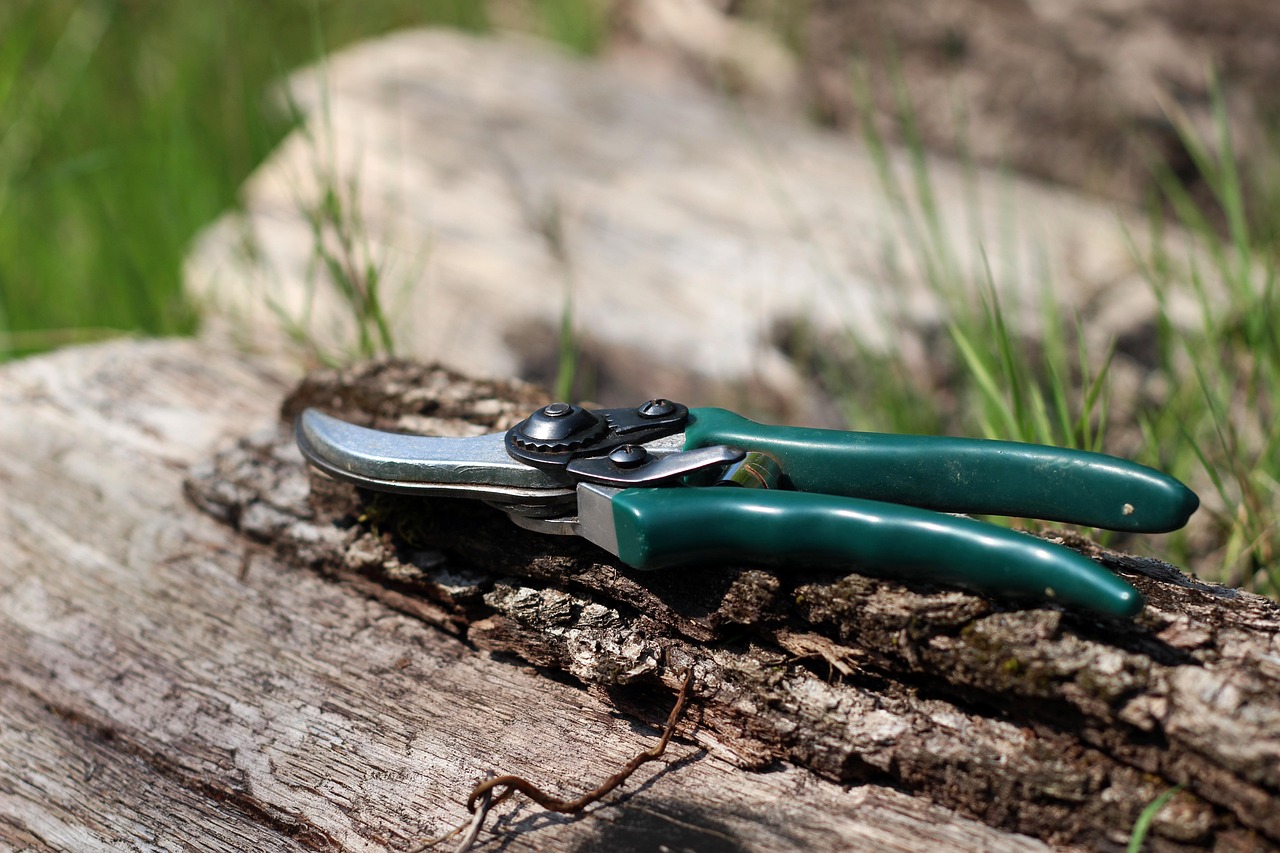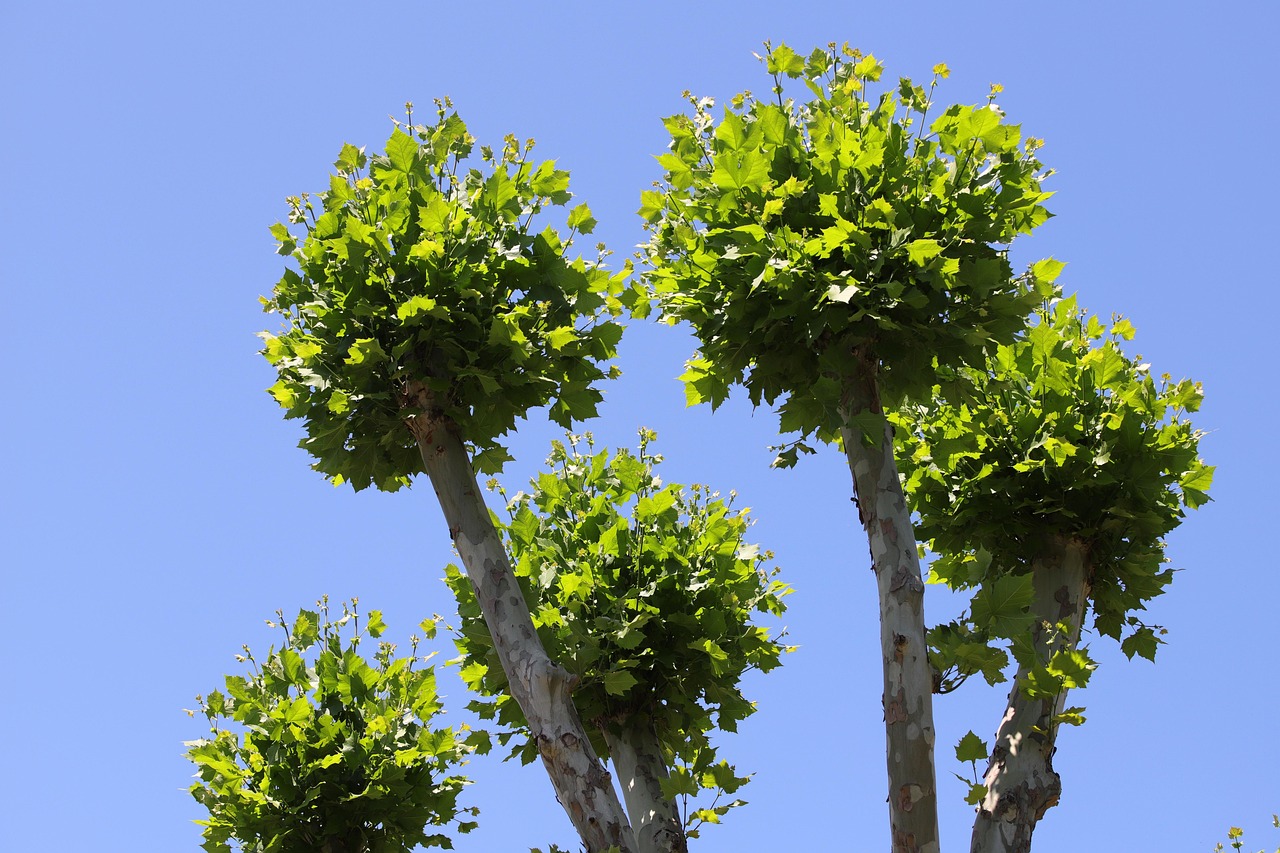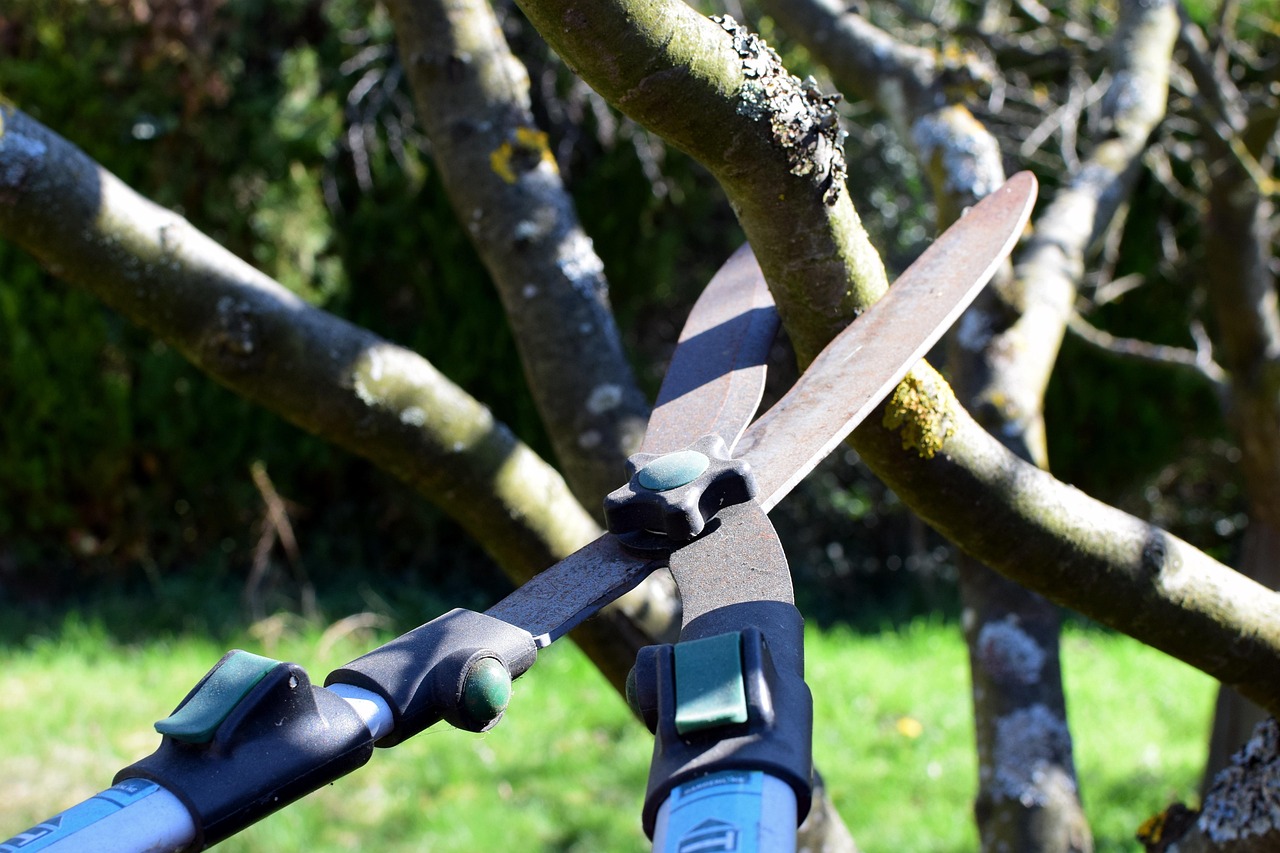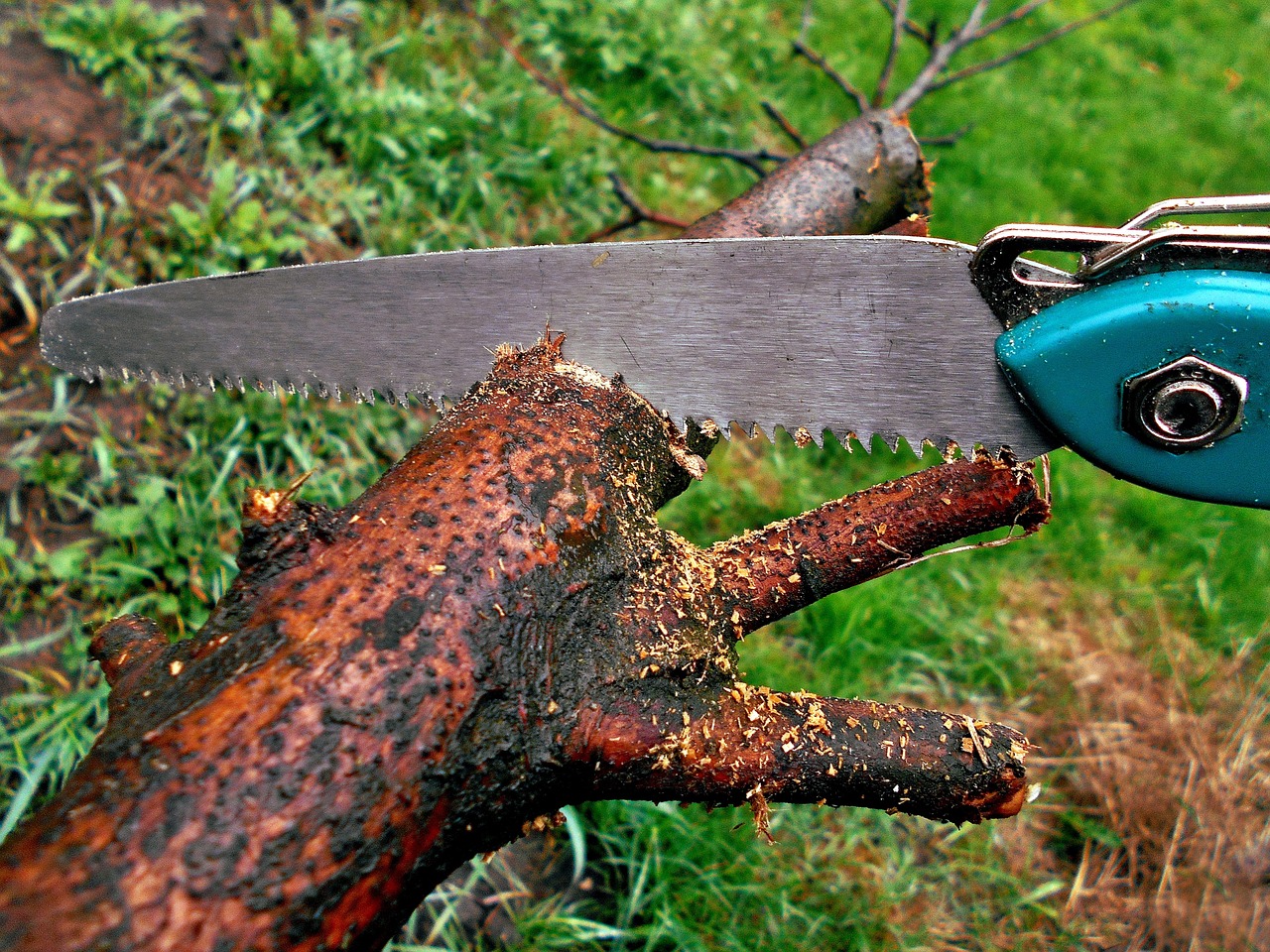Summer pruning involves selectively trimming trees and shrubs during the warmer months. This practice helps maintain plant health, encourages denser foliage, and creates cooler, shadier outdoor spaces. It is especially beneficial for ornamental plants and fruit-bearing trees.
As the summer heat approaches, many homeowners begin to think about their outdoor spaces. A well-maintained garden can provide a refreshing retreat from the sweltering sun. One effective way to enhance the comfort of your outdoor area is through summer pruning. This technique not only improves the aesthetic appeal of your plants but also promotes a cooler environment.

Summer pruning is the practice of trimming trees and shrubs during the growing season. The goal is to control growth and improve air circulation. By removing certain branches, plants can focus their energy on producing new leaves and fruits. This process can lead to denser foliage, which provides more shade. Moreover, it can help reduce the risk of disease by improving sunlight penetration and air flow.
Benefits of Summer Pruning
There are several advantages to summer pruning that can transform your yard into a cooler, more inviting space. Some key benefits include:
- Improved Air Circulation: Removing excess foliage allows for better airflow. This can help reduce humidity levels around the plants.
- Enhanced Light Penetration: Pruning opens up dense canopies. This increased light can promote healthier growth in the remaining branches.
- Controlled Growth: Summer pruning helps regulate plant size. This is especially useful for larger trees and shrubs that may overshadow smaller plants.
- Boosted Fruit Production: For fruit-bearing trees, summer pruning can lead to better fruit quality and yield.
- Reduced Disease Risk: By improving air circulation, you lower the chances of fungal diseases developing.
Understanding the right techniques for summer pruning can help achieve these benefits. It is essential to know which plants respond best to this method. Some species thrive with summer pruning, while others may be more suited to winter pruning. Researching specific plant types will guide you in making informed decisions regarding timing and technique.

Best Plants for Summer Pruning
Not all plants should be pruned in the summer. Certain trees and shrubs respond better to this technique than others. Below is a table highlighting some common plants that benefit from summer pruning:
| Plant Type | Best Time for Pruning | Benefits |
|---|---|---|
| Deciduous Trees | Late Spring to Early Summer | Encourages leafy growth and improves structure. |
| Fruit Trees (like Apple and Pear) | Mid-Summer | Improves fruit size and reduces disease risk. |
| Shrubs (such as Hydrangeas) | After Blooming | Promotes more blooms for the next season. |
| Perennials (like Echinacea) | Summer | Encourages bushier growth and longer blooming periods. |
When considering summer pruning, it is also important to keep in mind that not all plants require the same level of care. Some may need extensive trimming, while others may only require minor adjustments. Observing your plants throughout the season will help you determine their needs effectively.
Techniques for Effective Summer Pruning
To ensure successful summer pruning, one must employ the right techniques. Here are some effective practices to follow:

- Use Sharp Tools: Always make clean cuts with sharp shears or pruners. This minimizes damage to the plant.
- Identify Target Branches: Focus on dead or overcrowded branches first. Remove these before addressing healthy growth.
- Aim for Balance: Trim evenly around the plant to maintain a balanced shape. This encourages uniform growth.
- Observe Plant Health: If a plant appears weak or diseased, be cautious about how much you prune. Allow it to recover first.
- Time Your Pruning: Aim to prune on dry days to avoid fungal infections that thrive in moisture.
By following these techniques, you will create a healthier environment for your plants while also enhancing your outdoor space’s appeal. Summer pruning can be a rewarding experience that transforms your garden into a cooler haven during hot months.
The right combination of knowledge and technique will not only help you maintain your plants effectively but will also contribute to a more comfortable outdoor atmosphere during the summer heat. Engaging in summer pruning allows you to enjoy your garden while creating a welcoming space for relaxation and enjoyment.
Timing Your Summer Pruning
Understanding when to prune is crucial for achieving the best results. Summer pruning is typically done between late spring and mid-summer. This timing allows plants to recover quickly and encourages new growth before the cooler months arrive. However, specific timing can vary based on plant type and local climate conditions.

Here are some general guidelines for timing your summer pruning:
- Late Spring Pruning: This is ideal for trees and shrubs that bloom later in the summer. Pruning during this time encourages robust growth and flowering.
- Mid-Summer Pruning: For fruits, such as apples and pears, mid-summer is the best time to prune. It helps in promoting the development of larger fruits.
- After Flowering: Many flowering shrubs should be pruned right after they finish blooming. This ensures that you do not remove next season’s buds.
Identifying When to Prune
Being able to recognize the signs that a plant needs pruning is essential for effective summer maintenance. Here are some indicators to look for:
- Overcrowded Branches: When branches begin to cross each other or grow densely, it is time to consider pruning. This helps to prevent competition for light and resources.
- Dead or Dying Branches: Remove any dead or diseased limbs immediately. These branches can attract pests and diseases that may harm the rest of the plant.
- Pest Infestation: If you notice signs of pests, such as holes in leaves or sticky residue, pruning infested branches can prevent the spread of pests.
- Weak Growth: If certain areas of a plant appear weak or straggly, pruning these sections can encourage stronger growth in healthier areas.
The Tools You Need for Summer Pruning
Using the right tools is important for effective summer pruning. Proper equipment can make tasks easier and ensure clean cuts, which promote healing in plants. Below is a list of essential tools:
- Hand Pruners: Ideal for small branches and delicate stems, hand pruners are perfect for precision cuts.
- Loppers: For larger branches, loppers provide more leverage and strength, making cuts easier without excessive force.
- Saw: A pruning saw is necessary for cutting thicker branches that cannot be handled by pruners or loppers.
- Gloves: Protective gloves help prevent hand injuries while working with thorny plants or rough edges.
- Disinfectant: It’s wise to have a disinfectant on hand. Cleaning tools between cuts prevents the spread of disease.
Common Mistakes to Avoid During Summer Pruning
Even experienced gardeners can make mistakes while pruning. Being aware of common pitfalls can help you achieve better results. Here are some mistakes to avoid:
- Pruning at the Wrong Time: Timing is critical. Pruning too early or too late can hinder plant growth and flowering.
- Over-Pruning: Removing too much foliage can stress the plant and reduce its ability to photosynthesize effectively.
- Poor Cutting Technique: Making jagged cuts can damage plant tissues. Always aim for clean cuts at a slight angle.
- Inefficient Tool Maintenance: Neglecting tool maintenance can lead to dull blades, which make it harder to prune effectively.
- Lack of Planning: Not having a clear plan can lead to uneven pruning, affecting the overall shape and health of the plant.
Post-Pruning Care
The work doesn’t end once you finish pruning your plants. Proper post-pruning care is essential for recovery and growth. Here are some tips to consider:
- Watering: Ensure your plants receive adequate water after pruning. Proper hydration aids in recovery.
- Fertilizing: Applying a balanced fertilizer can provide nutrients needed for new growth. Be cautious not to over-fertilize.
- Mulching: Adding mulch around the base of plants helps retain moisture and suppress weeds while providing nutrients as it breaks down.
- Pest Monitoring: Keep an eye on your plants for any signs of pests or disease after pruning. Early detection is key to effective management.
By understanding these aspects of summer pruning, you will be equipped with the knowledge needed to enhance your garden’s health and aesthetics. Implementing proper techniques, timing, and post-pruning care will contribute significantly to creating a cooler and shadier outdoor space during the summer months.
Understanding Plant Growth Patterns
To make the most of summer pruning, it is essential to understand how different plants grow. Each species has unique growth patterns and requirements, which can influence how and when you prune. Recognizing these patterns can significantly impact your gardening success.
Plants typically exhibit two main types of growth: vegetative and reproductive. Vegetative growth focuses on developing leaves and stems, while reproductive growth is about producing flowers and fruits. Knowing when these growth phases occur can help you time your pruning effectively.
Seasonal Growth Phases
Different plants have distinct seasonal growth phases. Here’s a breakdown of how these phases typically work:
| Plant Type | Growth Phase | Best Pruning Time |
|---|---|---|
| Deciduous Trees | Vegetative in Spring; Reproductive in Summer | Late Spring to Early Summer |
| Fruit Trees | Vegetative in Spring; Reproductive in Summer | Mid-Summer |
| Flowering Shrubs | Reproductive in Early Summer | Immediately after flowering |
| Perennial Plants | Vegetative in Spring; Reproductive in Summer | Mid-Summer |
This table illustrates how understanding the growth phases of various plants can guide your pruning schedule. For instance, pruning deciduous trees before they enter their reproductive phase allows for healthier leaf and flower production.
Pruning Techniques for Different Plant Types
Each plant type requires specific pruning techniques to ensure optimal health and growth. Below are some effective techniques tailored to different plants:
Deciduous Trees
When pruning deciduous trees, consider these techniques:
- Crown Thinning: Remove select branches to improve light penetration and air circulation.
- Crown Raising: Remove lower branches to allow more light for undergrowth and create an aesthetically pleasing height.
- Crown Reduction: Trim back the top to maintain the tree’s size and shape without sacrificing health.
Fruit Trees
For fruit trees, focus on the following methods:
- Summer Pinching: Pinch back new shoots to encourage larger fruit development.
- Suckering Removal: Remove suckers that grow from the base to direct energy to fruit-bearing branches.
- Open Center Pruning: Create an open center to enhance air circulation and light access for fruit.
Shrubs and Perennials
Shrubs and perennials can benefit from these pruning techniques:
- Deadheading: Remove spent flowers to promote additional blooms throughout the season.
- Cuts Above Leaf Nodes: Make cuts just above leaf nodes to encourage bushier growth.
- Dividing Clumps: For perennials, dividing overcrowded clumps can rejuvenate growth and improve flowering.
The Role of Climate in Pruning Decisions
The climate in which you live can greatly influence your summer pruning strategy. Different climates can affect plant growth rates, disease susceptibility, and the timing of flowering. Here are key considerations based on climate:
- Tropical Climates: Plants may grow year-round, requiring more frequent pruning to maintain shape and health.
- Temperate Climates: Seasonal changes should guide your pruning schedule. Late spring is often ideal for most plants.
- Arid Climates: Water conservation is crucial. Prune carefully to ensure adequate foliage remains for photosynthesis.
- Cold Climates: Winter dormancy means that late summer pruning is often beneficial because it prepares plants for winter.
Pest Management During Summer Pruning
Pest management is a critical component of maintaining healthy outdoor spaces, particularly during summer pruning. When you prune, you expose the inner parts of the plants, potentially inviting pests. Here are some strategies to manage pests effectively:
- Regular Inspection: Regularly check your plants for signs of pests. Early detection can prevent infestations.
- Use Organic Pesticides: Consider using organic solutions that are safer for the environment and beneficial insects.
- Create Barriers: Use physical barriers, such as row covers or nets, to protect vulnerable plants from pests.
- Maintain Plant Health: Healthy plants are less susceptible to pests. Ensure proper watering and fertilization to strengthen plant defenses.
Pest management should be an ongoing concern throughout the growing season. Keeping plants healthy will help deter pests naturally while allowing you to enjoy a lush, vibrant garden.
By understanding plant growth patterns, employing appropriate pruning techniques, and considering local climate factors, you can enhance the effectiveness of your summer pruning efforts. This knowledge will help create an inviting outdoor space that remains cool and shaded throughout those warm summer months.
Advanced Techniques for Summer Pruning
As you become more comfortable with summer pruning, you may want to explore advanced techniques that can further enhance your outdoor spaces. These methods can help optimize plant growth, improve aesthetics, and ensure a healthy garden environment.
Espalier Pruning
Espalier pruning involves training trees and shrubs to grow flat against a wall or trellis. This technique maximizes space and allows for better sunlight exposure and airflow. Here are some steps to practice espalier pruning:
- Select the Right Plant: Choose trees or shrubs with flexible branches, such as apple, pear, or certain ornamental varieties.
- Create a Framework: Install a trellis or wires to guide the growth of the plant.
- Train the Branches: Gently bend and tie branches to the framework as they grow, securing them with soft ties.
- Regular Maintenance: Prune regularly to maintain the shape and remove any unwanted growth.
This technique not only saves space but also creates a visually appealing feature in your garden or yard.
Formative Pruning
Formative pruning is an early-stage pruning process aimed at shaping young plants. This technique sets the foundation for strong growth and structure. Here are some tips:
- Start Early: Begin pruning young plants as soon as they are established. This encourages strong branching patterns.
- Focus on Structure: Aim to create an open canopy that allows light to reach the center of the plant.
- Remove Competing Leaders: If multiple strong stems are present, select one to be the main leader and remove others to prevent competition.
Implementing formative pruning early can lead to healthier plants that require less maintenance as they mature.
Coping with Pruning Stress
Summer pruning can be stressful for plants, especially if they are pruned too aggressively. Understanding how to mitigate this stress can lead to better recovery and growth. Here are some strategies:
- Gradual Pruning: Avoid removing too much foliage at once. Instead, gradually prune over several seasons to reduce stress.
- Timing Adjustments: If a plant shows signs of stress after pruning, adjust your timing in future years to better align with its growth cycle.
- Observe Recovery: Monitor plants closely after pruning. Look for new growth as a sign of recovery.
Coping with pruning stress is vital for ensuring that your plants thrive after summer pruning sessions.
Seasonal Considerations Beyond Summer
While summer pruning is essential, it is also important to consider how seasonal changes throughout the year affect your garden. Planning for winter and fall can make your summer efforts more effective. Here are some seasonal considerations:
- Fall Pruning: Some plants benefit from light pruning in the fall. This removes dead material and prepares them for dormancy.
- Winter Protection: Consider protective measures for delicate plants during the winter months. Wrapping or covering can prevent damage from frost.
- Spring Preparation: Spring is a time for rejuvenation. Ensure your plants are ready for new growth by providing adequate nutrients and care in early spring.
By considering these seasonal factors, you will create a comprehensive care plan that enhances your garden year-round.
Final Thoughts
Summer pruning is an invaluable tool for creating cooler and shadier outdoor spaces. Through proper techniques, timing, and understanding of plant growth, you can significantly improve the health and appearance of your garden. Advanced methods like espalier and formative pruning can help you maximize space and create beautiful designs.
Additionally, effective pest management and coping with pruning stress are critical components of maintaining a thriving garden environment. By implementing these practices, you will not only enjoy a more comfortable outdoor area during hot months but also foster long-term health for your plants.
As you delve deeper into summer pruning, remember that each plant is unique. Tailoring your approach based on species, climate, and individual plant needs will lead to optimal results. With patience and practice, your garden will flourish into a beautiful sanctuary filled with shade, beauty, and lush greenery throughout the summer months.
Your ongoing commitment to learning and adapting your gardening techniques will ensure that your outdoor space remains inviting, comfortable, and vibrant for years to come.
